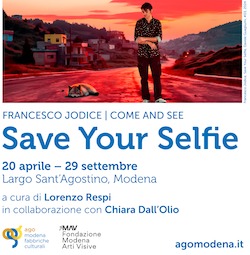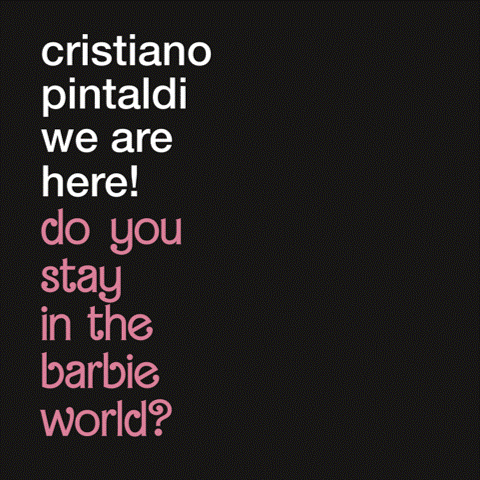[nemus_slider id=”61224″]
In occasione della mostra di Robert Mapplethorpe ospitata alla Galleria Franco Noero – nella sede di Piazza Carignano 2 a Torino – vi proponiamo una significativa intervista di Gary Indiana al noto fotografo, risalente al 1988, un anno prima la sua scomparsa
BOMB — Artists in Conversation
Robert Mapplethorpe by Gary Indiana
Gary Indiana Here’s a good question: why haven’t there been any museum shows of your work in New York?
Robert Mapplethorpe That is a good question, but you could figure it out pretty easily. The contents of certain photographs are a bit more than certain people can deal with. It’s that way to a degree, anyway. The fact that I’m a New Yorker makes it a lot easier to get shows in European institutions—it’s easier for them to take a show of controversial material from a foreigner, someone who isn’t from there.
GI When you do a show, do you have problems with censorship?
RM Indirectly, yes. I haven’t had someone specifically say, “I can’t do that because this picture’s in there, ” or “You better take that one out.” But it’s a heavy statement for somebody to take me on—in other words, it’s a lot easier just to avoid it. I’ve had a lot of that over the years. I am having a show at ICP in Philadelphia which is coming up in December, 1988; hopefully, that will travel to New York. We’re working on it now.
GI Have there been situations where a gallery or institution says they want to do a show of your work, and they specify what kind of work they want?
RM Maybe. It doesn’t bother me. I’ve always been easy and flexible about that, except when it comes to showing in my New York commercial gallery—I’m very specific about what I want in that show. But when it comes to other places, I like all the pictures equally. I don’t care if somebody just wants to show flowers; I’ll just show flowers. I’ve never been strict—you know—”If that picture doesn’t go in, I don’t do the show.” I’m much more flexible than that. If someone wants to do a portrait show, I do a portrait show. It’s not usually an issue, because I don’t care. Sometimes they feel they can put certain kinds of pictures in, but can’t go any further—maybe a cock, but it couldn’t be hard. That’s all right. I’ve seen too many artists being so overly sensitive to how their work is represented, and it’s so unattractive that I try to avoid it at all costs.
GI Can you say something about these new still lifes?
RM I’m doing a series of dye transfers with color images, which I’ve never shown. I’ve done color pictures since I started taking pictures, but I never spent too much time with color, and never exposed it to the public. I always wanted to do dye transfers and couldn’t afford them. And now I can, so I’ve gone back. That’s a brand new picture, the last one in the group. And, had I not been doing all the magazine work I’ve been doing, I probably wouldn’t have come up with an image like that. I worked with an art director, setting it up. A lot of people who are “art photographers” won’t do anything commercial, they say it’s going to destroy the art. But I think it can add to it, actually. I think it’s a cop-out to take that attitude. Some of my better pictures, wouldn’t have been done had I not done work for House and Garden and all that stuff.
GI I probably wouldn’t have written anything in the last two years if I didn’t have a job, actually. It’s funny, when you were talking about prima donnas . . . I’ve always found that completely unattractive also.
RM I’ve seen people at openings, straight people I’m talking about, running around so nervous. You should be able to have a good time at your own opening. It’s your work and you’ve done it all your life, and if you don’t feel comfortable with it, something’s wrong. But I’ve seen them, real butch guys become these sort of—
GI Like name deleted, my god.
RM I’m sure.
GI Case history in paranoia.
RM It’s so unattractive. I don’t want myself ever to be seen that way.
GI In your last show, you combined photographs with objects, which is something you tried doing years ago, too; now it’s starting to come together.
RM I can finally afford to do it now. And putting photographs on other surfaces, getting rid of the paper . . . unfortunately, that’s very expensive. I don’t see them as photographs any more. I see them as objects that happen to use photography.
GI Is it hard to get a good price for them?
RM In relationship to painting, I guess. If I was around as long as I’ve been around, as a painter, the object I’d be selling would bring a hell of a lot more money than the things I do sell. But they’re still selling for a substantial amount. A framed piece, I think, is $15, 000—a lot for a photograph.

GI That’s good.
RM It costs a couple thousand, maybe, to produce, and you split it with your gallery; it’s not $50, 000, which is what a painting might cost, I’m not competing with that. Photography is a whole different—it’s so many different things. I think it’s more interesting than being a painter because you’ve got all these options. You can do books, you can do postcards, you can do calendars, you can work for magazines, you can reprint, you can do album covers; then you make art objects as well. Some money comes from that, it all adds up. It’s not that easy; you have to work hard. But I wouldn’t trade places with a painter. I think you have a really interesting life as a photographer. To me the most important thing is my experience, and not anything else. I care more about that than anything—I care about what I’ve gone through.
GI What about getting someone you’re photographing to do what you want, or rather, to be comfortable with you. Everybody approaches that in a different way. How long does it take you to see what you want to do, say, when you’re doing a portrait?
RM It really depends on the person and on the situation. I don’t have a formula. It’s a matter of being sensitive. Often photographers aren’t. I’ve been at the other end, and I’ve seen how somebody can extend a photo shoot beyond the point where it’s comfortable. Maybe it’s what they want in their photographs, but it’s not my approach at all. You take a certain number of rolls of film, and after that it becomes work, the magic moment’s gone. I think photographers are often unaware of that, and continue on, and force the issue. But I’m very flexible. I just did nudes, of this boy over here. He really didn’t want to, he was uncomfortable doing nudes. I told him, I don’t want you to do anything you don’t want to do. I said we can do them now, we can do them another time if you feel more comfortable, or we don’t have to do them at all. When I was a kid, I remember, I was 16 or something, I found myself in a situation with a dirty old man wanting to do nudes and being pushy, pulling my clothes off, it was horrible. I would never do that to somebody. I don’t ever want anybody to do something they don’t want to do.
GI I’m curious, because in your work, you really eroticize everything you take a picture of. That’s one of the chief characteristics of your photography, that you have an erotic vision of the world . . . but when you’re taking the photograph, let’s say, of a cock, does that become something like a vase, or . . .
RM Well, yes. Yes and no. Basically, I try to get it in the same position I would if it were a solitary object. But it’s more difficult because you have a person with this thing, you’ve got to deal with the personality, even though it’s a body part, you’re still dealing with a personality that’s attached to the body part. It’s more complicated, but otherwise it’s the same. I mean, I’m not looking at it in a different way . . . I’m looking at things the way I look at them, no matter what they are.
GI I wonder also about the S&M pictures, which I don’t think have ever been shown in New York.
RM Not as a group of pictures. Some of them may have been shown—there were some in a show at Robert Miller, but I never made an issue of it . . .
GI Were those things that were happening for the camera, or were they things that were happening and you were there with the camera?
RM They were happening for the camera. Almost always. Maybe one or two documentary kinds of situations that I found myself in, where it was somewhat of a blur because I was documenting something that was already happening. But for the most part, those situations were created with my photographs in mind. The situation had already existed, they weren’t people play-acting and doing something they hadn’t done before; they had put it together for that photo session. So I had a very large amount of control over the situation.
GI Do you think these specific pictures have caused problems for you, critically, for instance?
RM They have. I mean it’s funny. Even with people who maybe just know about them. It’s been an element that people can’t take. It’s funny to think about them. It’s past history to me, but I think they’ve influenced the way people look at my pictures, even though they might not have even seen the S&M pictures. I mean, I’ve had reviews and such, especially in the gay press, where they’ve been really nasty about them. They attacked me as a person, and decided I was a certain kind of person because only a certain kind of person would take those kind of pictures. It was so weird. It really depressed me. It isn’t negative criticism that makes you feel good—though, in the long run, it doesn’t hurt in terms of your own mystique or whatever. But that certainly isn’t something you’d go out for. I mean I’ve never—I think people thought I was so clever I wanted that kind of reception. I didn’t want that.
GI A lot of people have strange, puritanical ideas about what it’s correct to look at, what’s correct to make pictures of. We move from Robert Mapplethorpe’s loft to a nearby restaurant. The conversation turns to “candid” photography and taking a camera around in public.
RM . . . The best picture I got at that party was Mick Jagger telling a secret, Bianca telling a secret to Mick. And I snapped it—and I felt so awful. I thought, that sort of stuff epitomizes—stealing secrets and stuff, it’s just too not me at all. I don’t want to know those secrets, I don’t care that much. It’s so strange, you’re a total voyeur in that situation. You’ve got a camera and the camera’s between you and whatever else is happening. Although I’d been invited as a guest, I ended up not being a guest at all. I was just recording it. I wasn’t enjoying it. And I think a lot of people who take photographs like that, they don’t know how to enjoy things without a camera. They use that as a way to have a good time—that’s what they think a good time is, because they don’t know how to have a good time, basically.
GI Holding a camera, to me, changes everything . . .
RM It does. Even some of the sex pictures, it was almost like theater that was happening for the photo session—it wasn’t sex. Taking photographs of sex . . . if you’re a voyeur, fine, but it’s not sex. It has nothing to do with sex. Even if there’s an orgasm. It’s all work. It’s made to look like fun, but it’s not. I made a great effort to take those pictures. But so did the people in them. They weren’t doing it for money, they believed in what they were doing at that time.
GI If you want to take someone’s picture
RM I don’t want to take anybody’s picture! People ask me, who would you really like to photograph? I don’t have anyone, you know? I’m doing a book on women, my next book’s called On Women, I have to come up with a list. I have to make an effort, to get some of these name women because the publisher wants some in there . . . I could care less. I see the point; but then you have to write a letter, get on the phone, talk to their agent—it’s so awfully complicated. Because of that, I’ve never photographed Mick Jagger, I’ve never photographed—you can go through the list—David Bowie, most of the key people, because it’s too complicated. I always hope that maybe they’ll come to me, but I don’t want them badly enough to go through those changes. But what were you asking me?
GI I wondered, if you just wanted to photograph someone you saw—are you too shy to approach them?
RM I’ve tried that once or twice in my life. There was somebody who was 7’1″ in California, who was so incredibly good looking, he was so tall, and I thought, “God, if I was a filmmaker I’d make a film around that guy, ” he was that tall and that good-looking. I went up to him and talked to him, gave him my card, I was in California at the time—and it never happened . . . it doesn’t seem to happen to me that way. Usually I meet someone socially. Or sometimes people send me people. But often they think it’s the perfect person for me to photograph, and it’s not at all. I’m not aggressive about getting people. Either they want it . . . Photographing some of the crazies, the complicated people, they didn’t understand that what they were doing was a little better than porn. I mean, at this point, I’m too old. At one time, I could put up with all these crazy personalities, but if they don’t get it, I’d rather not do it. When you’re young you have to take chances. I’m not talking about the pictures themselves, of course I still take risks, but with the people . . . it’s not worth the effort, the aggravation. I’ve done that area enough, I can do something else. I don’t think I’m typical as a photographer, in a lot of ways, because I still say my life’s experiences are much more important than the photographs . . . the real experience without the camera. I have to do it, and I do it, but . . . I’ve heard stories, where a photographer worked for a number of months to get a certain person, and finally they had a date to shoot, and he jumped up and down saying, “I got him! I got him!”—when I heard that, it sounded so creepy.
To be continued… bombmagazine.org
http://bombmagazine.org/article/1003/


Robert Mapplethorpe
Until 11 February 2017
Galleria Franco Noero presents a new exhibition of photographs by Robert Mapplethorpe held for the first time in the space of Piazza Carignano 2, in collaboration with The Robert Mapplethorpe Foundation.
Robert Mapplethorpe, the extraordinary, controversial proponent of the American avant-garde remains an anti-conformist symbol of a timeless form of the contemporary. He managed to embody an extreme sense of freedom, and this consistently emerges in the interactions between his artistic practice, the private and intimate aspects of his personal life, his circle of friends, celebrity and the public.
There is always something new to be discovered working through the immensely rich patrimony of perspectives and points of view that the artist has left us through his body of work, which continues to surprise us through changes of taste and time, always keeping a formidable balance between the current and the timeless. An extraordinary grace is found in unpredictable layers, in aspects of life that can only be revealed by crossing boundaries, flirting with pleasure and delight as much as with the unconventional, while sheding a light on the appearance of things that never hides the darker side.
The choice of pictures is a sequence of associations, contrasts and similarities in the compositional schemes and genres dear to the artist: portraiture, still life, male and female nudes, body parts and sensuality. It’s a journey that spans from the diamond-pure freshness of the eye of youth in the 70’s, its gushing curiosity fed by the hunger for discovery and the new, to the more layered and sophisticated moments of the 80’s, tinged with a bit of hedonism and skillful refinement. The fascination and necessity of dialogue between his deep passion for and knowledge of classical sculpture and painting constantly unfolds: an extremely formal and stylistic precision is the ground on which lays his capacity for letting his eccentricity appear, his ability to capture the unexpected, thereby creating a sense of mysterious awe.
The period rooms of the 18th century apartment where the Gallery is located and the great architectural setting of Piazza Carignano that one can enjoy from the windows, have inspired a dialogue with the chosen themes and the flow of the pictures throughout the connected rooms. A suite of sitters welcomes the visitor, as if they could have been residing and literally ‘sitting’ in the rooms, or if they were actors on a stage set. Mapplethorpe’s relationship with European artistic culture and Italy is revealed through a choice of pictures about classical antiquities, both sculptural and architectural, and by the posture he has asked some of the portrayed characters to assume. Single pictures of flowers work as punctuation throughout all of the rooms, while a large sequence of images are dedicated to two of the favourite models of the artist, Milton Moore and Dennis Speight, showing great inspirational moments in an exciting ‘crescendo’. The main mirrored room of the Gallery space is dominated by Mapplethorpe’s self-portrait holding a knife, which becomes a sharpened protrusion of his arm, as if he was in constant search of something, beguiling and threatening at the same time. The picture reverberates all throughout the room, hanging on one of the coloured panels expressly conceived for the exhibition by Italian designer Martino Gamper, inspired by the colours chosen by Mapplethorpe in the tight series of unique framings he has realized.
In all of the pictures moments are captured with a magical feeling of weight and movement, the constraint of postures and tension in the bodies and still lifes, all reveal the evident wish of capturing humans and inanimate objects with the same intention. The revelation of an inner truth through the sensational vision of Mapplethorpe’s eye and of its prosthetic camera tool, leads to a masterly modulation of starck black and white tones, diving and melting into a field of softer and ever changing shades of grays.












